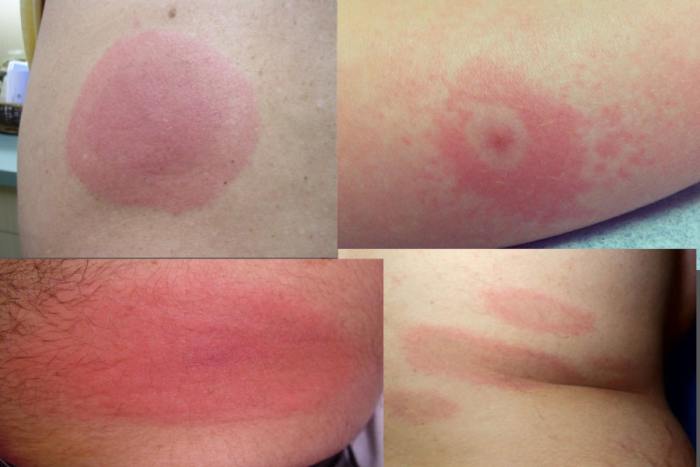Lyme Disease Recognition Month-- Discover Just How to Protect Yourself
April is assigned as Lyme Disease Understanding Month, functioning as a necessary reminder of the value of understanding and preventing this progressively prevalent tick-borne disease. With climbing occurrences reported across different regions, it is essential to outfit ourselves with knowledge about efficient avoidance strategies and early signs and symptom recognition. By embracing straightforward yet efficient methods, people can considerably reduce their risk of exposure. As we explore the nuances of Lyme condition, it becomes clear that awareness is not practically information; it has to do with taking significant activity to safeguard ourselves and our communities. What actions can we execute today?
Understanding Lyme Disease
Recognizing Lyme Condition begins with identifying its beginnings and transmission. This transmittable illness is mainly triggered by the microorganism Borrelia burgdorferi, which is sent to human beings via the bite of infected black-legged ticks, commonly understood as deer ticks. These ticks prosper in wooded and grassy areas, making outside activities a potential threat for direct exposure.
The lifecycle of the tick is important to understanding how Lyme Disease spreads (Lymecare Alliance). Normally, the ticks begin feeding in the larval phase, commonly getting the germs from small mammals, such as deer or rats. As they become nymphs or grownups, they can then transfer the germs to larger hosts, consisting of people

Acknowledging Symptoms Early
Early acknowledgment of Lyme Disease signs is essential for efficient therapy and recovery. Lyme Illness, transferred primarily via the bite of contaminated black-legged ticks, can cause serious problems if not resolved without delay. The first signs and symptoms often show up within 3 to thirty days following a tick bite and might include fever, chills, tiredness, muscular tissue and joint pains, and inflamed lymph nodes.
Among the trademark indications of Lyme Disease is the characteristic erythema migrans rash, which looks like a "bull's- eye" pattern and commonly emerges at the site of the tick bite. This rash may not show up in every situation, making it necessary to continue to be watchful regarding other signs and symptoms.
As the disease progresses, if left unattended, it can cause extra significant issues, consisting of neurological problems, cardiac problems, and relentless joint pain. Consequently, people that have actually been in locations where Lyme Illness is native should be mindful and monitor their wellness very closely after prospective direct exposure. Trigger medical appointment upon noticing these signs can facilitate very early diagnosis and treatment, dramatically boosting the chance of a full healing. Understanding and education and learning concerning these very early indicators are crucial in combating the impact of Lyme Condition.
Effective Avoidance Methods
Preventing Lyme Disease needs an aggressive strategy, particularly for people that frequent areas where ticks are common. Comprehending reliable prevention methods is vital in decreasing exposure to these disease-carrying arachnids.
First, it is vital to wear suitable clothing when in tick-infested settings. Lengthy sleeves, long trousers, and closed-toe footwear can significantly lower skin exposure. Take into consideration dealing with clothing with permethrin, an insect repellent that remains reliable through numerous washes.
Furthermore, applying a tick repellent having at least 20% DEET to exposed skin can additionally protect versus attacks. On a regular basis examining for ticks after outside tasks is important; execute thorough body inspections, particularly in warm, damp areas such as behind the knees and within the hairline.
Producing a tick-safe environment around your home is also helpful. Maintain your lawn well-kept by cutting the grass frequently, removing leaf clutter, and creating obstacles of gravel or timber chips to different wooded locations from entertainment areas.
What to Do After a Bite
Quickly after Learn More a tick bite, it is important to take quick activity to minimize the risk of Lyme Condition transmission. Draw upward with consistent, also pressure; do not jerk the tick or turn, as this might create parts to damage off and stay in the skin.
Display the bite site for signs of infection, such as soreness, swelling, or a rash. It is necessary to be cautious for signs of Lyme Condition, which might consist of high temperature, cools, fatigue, and joint pain, usually appearing within three to 30 days post-bite. If you see a characteristic "bull's- eye" rash or experience any one of these symptoms, look for medical interest quickly.
Educate your healthcare copyright of the tick bite, particularly if the tick was affixed for greater than 24 hours or was engorged. Early treatment is crucial in stopping the onset of Lyme Condition and making sure reliable therapy if necessary.
Resources for Additional Information
Understanding the Visit Website steps to take after a tick bite is crucial, however so is having access to trustworthy resources for ongoing education and learning concerning Lyme Illness. Countless companies provide thorough info to help people remain notified regarding prevention, symptoms, and treatment options.
The Centers for Condition Control and Prevention (CDC) offers a wide range of sources, including guidelines on tick prevention and information on Lyme Disease data. Their website is an essential starting point for anybody looking for knowledge about the illness's effect and exactly how to reduce risks.
An additional important source is the Lyme Illness Organization, which concentrates on research, advocacy, and education and learning (Lymecare Alliance). Their system includes articles, webinars, and updates on the most up to date clinical searchings for, making it a crucial device for both clients and medical care professionals
In Addition, the American Lyme Disease Structure provides instructional products tailored for various target markets, including caretakers and outdoor enthusiasts. They also host community occasions that promote awareness and avoidance approaches.
For those seeking support, organizations like the Tick-Borne Condition Alliance deal resources for attaching with regional assistance teams and accessing patient-centered treatment. Making use of these resources can equip individuals to safeguard themselves and their areas efficiently.
Conclusion

The lifecycle of the tick is critical to recognizing exactly how Lyme Illness spreads visit this website (Lymecare Alliance).The risk of Lyme Disease rises throughout warmer months when ticks are most energetic, particularly in regions where the condition is native, such as the Northeast, Midwest, and components of the West Coastline of the United States. Lyme Disease, transmitted largely via the bite of contaminated black-legged ticks, can lead to serious problems if not attended to without delay.Quickly after a tick bite, it is important to take quick action to lessen the danger of Lyme Illness transmission. Recognizing Lyme condition, acknowledging its signs and symptoms, and applying effective prevention methods can significantly decrease the threat of infection
 Mr. T Then & Now!
Mr. T Then & Now! Christina Ricci Then & Now!
Christina Ricci Then & Now! Mary Beth McDonough Then & Now!
Mary Beth McDonough Then & Now! McKayla Maroney Then & Now!
McKayla Maroney Then & Now! Mike Smith Then & Now!
Mike Smith Then & Now!